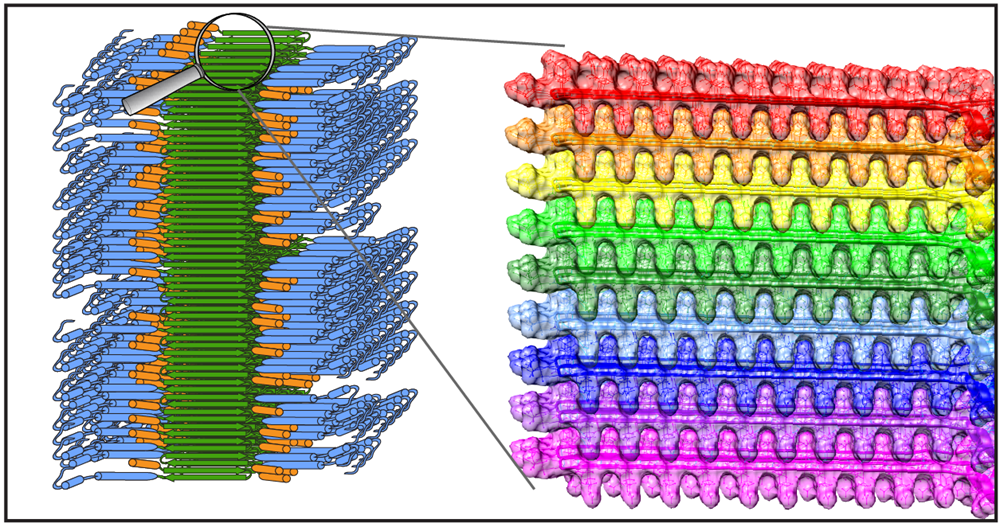Detailed model important step towards understanding Huntington’s
Huntington’s disease is still a quite mysterious disease. It is genetic and causes brain cells to degrade over time. Many researchers have tried to figure out what happens, but no-one has been able to find a cure yet. But thanks to associate professor Patrick van der Wel this might be a step closer. He and his team of researchers came up with a new, more detailed and specific molecular model of the mutated part of huntingtin, the protein that plays a big part in this disease. The model was published in the Journal of Molecular Biology on June 27th.
‘If you want to cure or find a medicine for a disease, you first have to understand how it works’, says Van der Wel. Unfortunately this is not yet the case for Huntington’s disease. ‘For Huntington’s we have a general idea, but details are not yet clear. That is why we started working on our model.’

Faulty gene
Van der Wel and his colleagues have been working on Huntington’s disease for a couple of years now. ‘We know that Huntington’s is caused by a faulty gene that gives a mutation in the protein huntingtin’, Van der Wel explains. ‘Due to this mutation the patients get clusters of proteins in the brain, similar to what happens with Parkinson’s or Alzheimer’s.’
The clusters are associated with the development of symptoms, so researchers were eager to find out how they form exactly. Studying of this process revealed that the mutated huntingtin protein undergoes polymorphism: it can fold in different ways and have multiple structures. Van der Wel: ‘In biology we often expect one protein to have one structure and one function. But huntingtin turns out to do good as well as bad things. We wanted to figure out how and why this happens.’
Folding and unfolding
In order to figure this out, Van der Wel’s PhD student Jennifer Boatz used techniques like electron microscopy and NMR to learn more about the structure of the huntingtin protein and see how it folds. All this analysing resulted in a very elaborate model of clusters formed by the mutant Huntingtin protein, the most detailed so far. According to Van der Wel, the model is an important first step towards better understanding: ‘Understanding the way the protein folds is very important for understanding the disease. And with this model the whole world can make more sense of what happens.’
However, the model is not the only important find. The researchers also discovered that the structure the protein formed depended on the concentration. ‘This is very important to know, since we tend to use very high concentrations if we study this protein in the lab. But in our body the concentration is very low, so if we want to mimic the situation in our bodies we need to change our approach.’
New research
The associate professor hopes that all this information will lead to new and interesting research: ‘We are looking at a number of different paths. It would be great if we could use our model to find molecules that can bind to the protein and prevent the wrong kind of folding. On the other hand we also want to look at diagnostics, and use the model to detect the clusters in a much earlier stage of the disease. And lastly I would really like to investigate what happens when one of these clusters forms and how it pushes other clusters to form.’
So there is still a lot of work to be done. For now, Van der Wel focusses on further improving the model. ‘We are working with the campaign team Huntington to take the next step. We really want to go to the atomic structure, and understand all the details. Because the more we know, the better we can fight this disease.’
Reference
Protofilament Structure and Supramolecular Polymorphism of Aggregated Mutant Huntingtin Exon 1. Boatz, J.C., Piretra, T., Lasorsa, A., Matlahov, I., Conway, J.F. & Van der Wel, P.C.A. (2020) J. Mol. Biol., 432(16): 4722-4744. (Open Access)
More news
-
15 September 2025
Successful visit to the UG by Rector of Institut Teknologi Bandung
